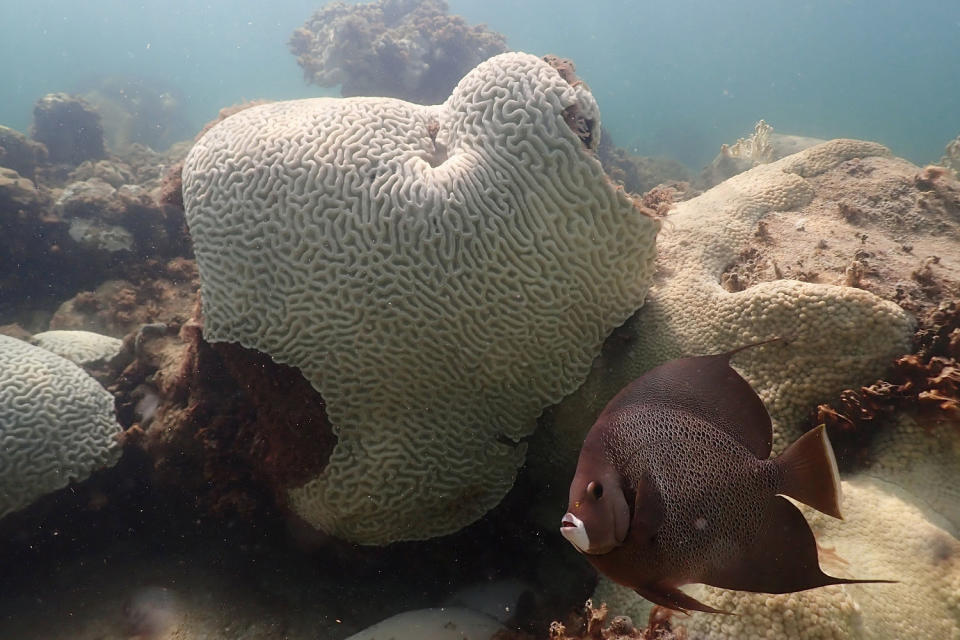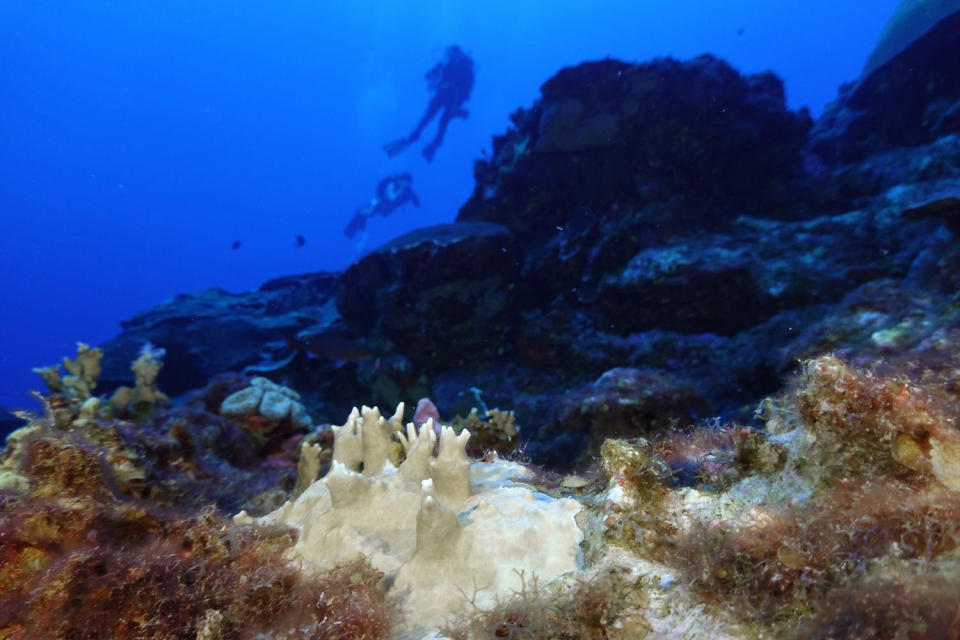Extreme ocean heat is causing a mass bleaching event in coral reefs worldwide, according to the National Oceanic and Atmospheric Administration.
NOAA announced Monday that “4. global coral bleaching event” and that bleaching has been documented in every major ocean basin in the past 14 months, including off Florida in the United States, Australia’s Great Barrier Reef, and those in the South. Pacific.
“As the world’s oceans continue to warm, coral bleaching is becoming more frequent and severe,” coral reef ecologist Derek Manzello, who coordinates NOAA’s Coral Reef Monitoring Program, said in a press release. “When these events are severe enough or last long enough, they can cause coral die-offs, harming people who depend on coral reefs for their livelihoods.”
Sea surface temperatures have been breaking daily records for more than a year, raising concerns among scientists trying to figure out how the oceans are warming so quickly. Warming from climate change and cycles of natural variability such as El Niño have played an important role.

The health of corals is intertwined with ocean temperatures because invertebrates are extremely sensitive to heat stress. When corals are exposed to stress, they turn white by releasing symbiotic algae that live in their tissues. Bleaching is a sign that the health of corals is compromised.
“Just because the coral is bleaching does not mean it is dead. “This means it is weak and at risk of dying if conditions do not improve,” said Ana Palacio, an assistant scientist at the Cooperative Institute for Marine and Atmospheric Research, a research institute at the University of Miami that works in partnership with NOAA. .
Corals are critical ecosystems that support a wide variety of fish and aquatic species, helping to nourish coastal communities and attract tourists. According to the 2020 report of the Global Coral Reef Monitoring Network, the economic value of reefs is estimated at $2.7 trillion annually.
“They protect our coastline. They provide protection against storms and hurricanes. They are of great value to our economy and security,” Palacio said.
Coral ecosystems are among the ecosystems that scientists think are most at risk from global warming. In 2018, the United Nations Intergovernmental Panel on Climate Change predicted that 70% to 90% of the world’s coral reefs would disappear if global average temperatures exceeded the threshold of 1.5 degrees Celsius above the pre-industrial average.
Last year was Earth’s hottest year on record. Average global temperatures have approached this threshold for the first time, but scientists believe temperatures have been boosted by El Niño and 2023 is an anomaly.
Experts said bleaching begins early in the season as sea surface temperatures rise in Florida.
“Normally, dawns will be seen in August and September in the Northern Hemisphere. “We started observing bleaching in July of last year,” said marine biologist Phanor Montoya-Maya of the Coral Restoration Foundation, an organization that collects, restores and propagates corals.
Palacio said widespread mortality has been seen in elkhorn and staghorn corals, which have been the focus of restoration efforts in the region.
“In some places, about 20% of these populations have survived,” Palacio said of the restored corals. “We’re focusing our hope on why these corals survive, what they can tell us about resilience, and how corals can become more resilient.”
The last global coral bleaching event occurred in 2014 and lasted until 2017. More than 56% of global reef areas experienced bleaching-inducing temperatures during this time.


In an email Monday, Manzello said 54 percent of the world’s coral reefs experienced bleaching-level heat stress last year, poised to be the worst bleaching event in history.
“The percentage of reef areas experiencing heat stress at the bleaching level is increasing by about 1% per week,” Manzello said. “This event is likely to exceed the previous peak.”
In Florida, a bleaching advisory was already in effect as early as last year, Montoya-Maya said. He said the Coral Restoration Foundation is preparing for a busy summer in response to another bleaching event.
The natural pattern of El Niño has begun to dissipate, and NOAA’s Climate Prediction Center estimates there is a 60% chance of La Niña developing this summer; This could help cool Atlantic waters and allow some corals to recover, at least temporarily.
“This is pretty heartbreaking and will cause damage to many reefs around the world,” Palacio said. “I’m hoping that this bleaching event will create some interest and that people will start to care more and pay attention to what’s going on with the climate.”
This article first appeared on NBCNews.com.